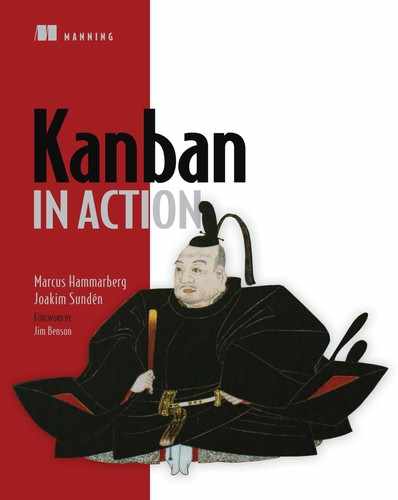Table of Contents
Chapter 1. Team Kanbaneros gets started
Chapter 3. Visualizing your work
4.1. Design principles for creating your cards
5.1. Understanding work in process
Chapter 6. Limiting work in process
6.1. The search for WIP limits
6.1.1. Lower is better than higher
6.2. Principles for setting limits
6.3. Whole board, whole team approach
6.4. Limiting WIP based on columns
6.4.1. Start from the bottleneck
6.4.2. Pick a column that will help you improve
6.5. Limiting WIP based on people
6.6. Frequently asked questions
7.3.1. Common good practices around standups
7.3.2. Kanban practices around daily standups
7.4. What should I be doing next?
8.2. What is a class of service?
8.2.1. Aspects to consider when creating a class of service
8.3. Managing classes of services
Chapter 9. Planning and estimating
9.1. Planning scheduling: when should you plan?
9.2. Estimating work—relatively speaking
Transition from iteration-based processes
9.5. Planning the kanban way: less pain, more gain
Chapter 10. Process improvement
Chapter 11. Using metrics to guide improvements
11.1.3. Issues and blocked work items
11.2. Two powerful visualizations
11.3. Metrics as improvement guides
Are you making a business impact or not?
12.1. All work and no play makes Jack a dull boy
12.2. Timeboxing is good for you
12.3. The necessary revolution
Chapter 13. Teaching kanban through games
13.1.1. What you need to play the game
13.2. The Number Multitasking Game
13.2.1. What you need to play the game
13.3.1. What you need to play the game
13.4.1. What you need to play the game
13.5.1. What you need to play the game
13.5.2. How the game is played
13.6.1. What you need to play the game
Appendix A. Recommended reading and other resources
A.3. Books on software development
A.4. Books on business and change management
